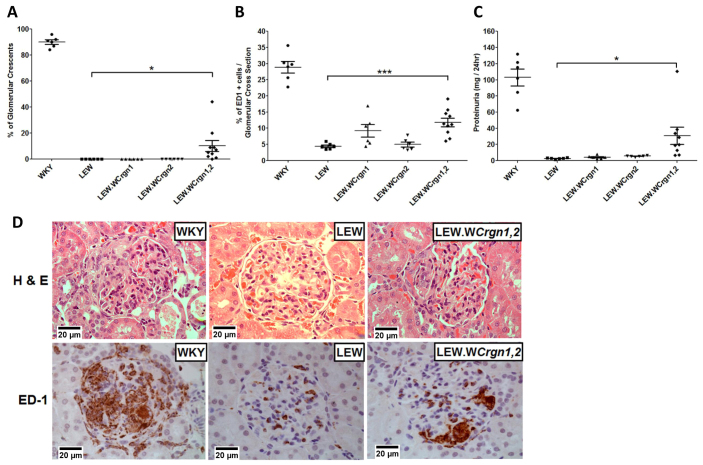Fig. 1.
NTN phenotypes in parental and congenic rat strains. (A) Percentage of glomeruli with crescent formation. (B) Macrophage infiltration quantified by the percentage of ED1+ cells per glomerular cross-section. (C) Measurement of proteinuria. ***P<0.001; *P<0.05 between LEW.WCrgn1,2 and LEW rats using oneway ANOVA with Newman-Keuls comparison test. WKY, LEW, LEW.WCrgn1, LEW.WCrgn2 rats, n=6; LEW.WCrgn1,2 rats, n=10, except for proteinuria, where n=9. (D) H&E staining (upper panels) and ED-1 (CD68) immunohistochemistry (lower panels) of glomeruli 10 days after injection with NTS. The H&E stain showed crescentic glomeruli in WKY rats and, for the first time, formation of glomerular crescents in a LEW-derived strain (LEW.WCrgn1,2), whereas LEW rats were resistant to crescent formation. ED-1 immunohistochemistry also showed a significant influx of glomerular macrophages in the LEW.WCrgn1,2 strain.

